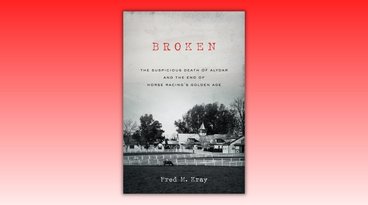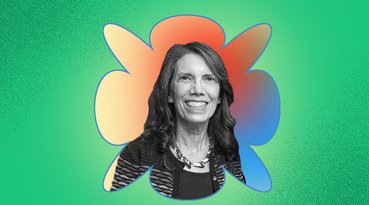One way to describe a novel you like, maybe the quickest way, is to say that you can’t put it down. People say that all the time. There are also novels that compel trickier, but no less passionate, emotions. They are books that confront you and make you wrestle with them. You might feel protective of the characters and their fates; maybe you feel like the writer is talking directly to, or about, you and you are delighted but spooked about what the writer might reveal. There is no shorthand phrase for a novel that seduces you even as it frightens, guts, exhausts, and disgusts you.
Hanya Yanagihara thinks of the emotional journey taken by readers of her novel A Little Life as akin to ombré fabric, a shirt, say, whose colors gradually shift from one tone to another, related tone. “I have this picture of a very light blue,” the beginning of the novel, “that shaded to a very dark indigo,” the ending, she says. “That was the emotional arc I wanted to take readers on through the book.” A Little Life is the most devastating but satisfying novel published so far this year. Finishing its 720 pages is like finishing one of the doorstop novels of 19th-century Russia: you feel worn out but wide awake.
The novel follows several decades in the lives of four friends who go to college in Massachusetts and move to New York after graduation. They are all men. (There is just one woman in the novel who’s given more than a passing glance.) Willem is an actor, JB an artist, Malcolm an architect, and Jude is a litigator. None of them have children; some are gay, some are straight. They all become successful in their fields. Yanagihara tracks the ups and downs of their friendships with one another in anthropological detail. That, essentially, is what this strange, moving novel is about.
Except that as the book progresses, Jude’s story absorbs more and more of Yanagihara’s interest. She wanted A Little Life to be an “interior epic”; Jude is its heart. Jude is abandoned at birth and raised by the brothers of a monastery in the West. They, and others later in his life, beat and use him. He walks with a noticeable limp from the injuries. He becomes a considerable harm to himself. But he is wily, thoughtful, and determined. He eventually finds a way to become a prestigious lawyer feared by his adversaries in court. His colleagues respect him, partly because he is such a mystery to them. The problem is that he makes himself a mystery to his closest friends. “He had thought that by not saying who he was, he was making himself more palatable, less strange,” Yanagihara writes. “But now, what he doesn’t say makes him stranger, an object of pity and even suspicion.” One of the haunting questions animating this book is whether being surrounded by the most giving, loyal friends is enough for someone who has survived—and inflicted upon himself—unbearable, prolonged abuse. “Once, he tried to write some things down, thinking that it might be easier,” Yanagihara writes about Jude, “but it wasn’t—he is unclear how to explain himself to himself.”
Doubleday also published Yanagihara’s 2013 novel, The People in the Trees, which earned critical raves and won her more coverage than most debut authors receive. Yanagihara, who grew up in Hawaii, set that novel on a fictional South Pacific island, a number of whose residents live to be over 100 years old. A Nobel Prize–winning scientist discovers a gene that the media hype as the secret to a long life. In the ensuing invasion of the island by Western corporations, the scientist adopts a number of the island’s children, one of whom he is accused of molesting. (The novel is partly based on the story of Daniel Carleton Gajdusek, who received the Nobel in 1976 but was convicted of child molestation in 1996.) Despite how emotionally tough it is to read A Little Life, it is actually a more approachable novel than The People in the Trees: everyone has friends and has fallen, or wants to, in love; far fewer of us can say we know anything about what the protagonist of The People in the Trees experiences.
In fact, A Little Life investigates a phenomenon that Yanagihara says half of humanity experiences: our culture’s lack of imagination about what it means to be a man. Men are given “such a small emotional palette to work with,” she says. “I think they have a very hard time still naming what it is to be scared or vulnerable or afraid, and it’s not just that they can’t talk about it—it’s that they can’t sometimes even identify what they’re feeling.” She says that she and her female friends talk about all kinds of emotions with one another. But “when I hear sometimes my male friends talking about these manifestations of what, to me, is clearly fear, or clearly shame, they really can’t even express the word itself.”
It’s not that Yanagihara thinks there isn’t enough fiction about men and their interior lives. It’s that there isn’t enough fiction about male friendships, about people who make friendship “another way of adulthood,” an alternative to marriage and children. Yanagihara says she is glad same-sex marriage is increasingly legal but that the idea of getting married “is one I personally find squirm-inducing. My friends and I just don’t believe in it as an institution.” During the AIDS crisis, gay men formed their own society and “expanded friendships beyond what social convention dictates”—sometimes for happy reasons and sometimes because they’d been banished from their families. She mentions some gay friends who are younger than she is at 40. “I don’t know if that impulse, that society of kinship and necessity, still exists,” she laments. She told one young gay couple she knows not to have a child, but they did have one. “They never see their friends anymore. They said something like, ‘Finally we’re a real family,’ and I thought, ‘You were always a real family.’ ”
Yanagihara is a writer for Condé Nast Traveler and has also worked in the publishing industry (see sidebar). Having a full-time job makes her a better artist, not a less productive one, she says. She spent 16 years, off and on, writing The People in the Trees but just 18 months on the 947 pages of A Little Life she turned in to Gerald Howard, the executive editor at Doubleday.
“I think it’s important to live in a society where writers and artists can make a living for their work, and I think it’s fine if you want to, but you’re probably going to be poor and that’s just the way it’s going to be,” Yanagihara says. Declarations like this cause people to assume Yanagihara the uncompromising writer is also a forbidding personality. “Hanya’s a pretty tough customer, and I don’t think she thinks much of editors as editors,” says her editor. In person, she is quite warm, chatty and playful. “She’s also super analytic and empathetic,” her friend Jared Hohlt, an editor at New York magazine, says. “She is very impish. Hanya has an amazing wit. She loves to ask friends outlandish ‘what if’ scenarios.”
When a writer believes that “if you don’t depend on your writing for money, you’ll have to compromise but you’ll never have to concede anything,” her editor might be more apt to lock and load than play nice. It is perhaps inevitable that there would be some “tussles,” as Howard puts it, between him and Yanagihara about the published version of A Little Life. They were mainly about the punishment that Jude suffers. “This is just too hard for anybody to take,” Howard told her, referring to Jude, not the reader (though the same could be said of the reader). “You have made this point quite adequately, and I don’t think you need to do it again.” Yanagihara says that Howard also thought Jude was too unbelievably talented. But “the talents he needs are never the talents he finds,” she replied to him, articulating one of the novel’s sad truths.
Howard says he won a few of those “discussions” with Yanagihara but not all. “One thing you better get used to as an editor is losing these arguments,” he acknowledges. “I lost a whole lot of them with David Foster Wallace when I was working with him, and that worked out pretty well.” Yanagihara says it wasn’t a question of winning or losing. “I thought his concerns were all legitimate.” A good editor, she says, “should take the things they think are weakest in the book and really make you fight for them.”
Not many passages that were up for cutting were cut. Yanagihara caused more contention with the photograph she asserted should be the book’s jacket image. To someone who doesn’t know photographer Peter Hujar’s work, or the series of photos this particular image comes from, it is reasonable to assume the jacket photo is m eant to evoke the idea of Jude grimacing in pain. Hujar is revered among photography critics and collectors, and some believe that Robert Mapplethorpe imitated Hujar’s work (whether or not he did, he had a far more lucrative and famous career than Hujar). The photo is actually titled Orgi-astic Man One from Hujar’s Orgiastic Man series; it’s a photo taken in 1969 of a man at the peak of orgasm.
eant to evoke the idea of Jude grimacing in pain. Hujar is revered among photography critics and collectors, and some believe that Robert Mapplethorpe imitated Hujar’s work (whether or not he did, he had a far more lucrative and famous career than Hujar). The photo is actually titled Orgi-astic Man One from Hujar’s Orgiastic Man series; it’s a photo taken in 1969 of a man at the peak of orgasm.
“Holy shit,” Anna Stein O’Sullivan, Yanagihara’s agent, remembers thinking when Yanagihara showed her the image she wanted for the book cover. “And to me, that’s a good thing,” she adds. “The fact that it makes you pay attention—it makes you look, it makes you wonder—that can only be a good thing.”
“I really wanted that image,” Yanagihara says. “It’s a really striking image, and I think the tone of it is just right. It’s not literally how I imagined Jude looking like, or Willem for that matter, but I do think there’s something unsparing about it and something sort of helpless, too.”
Hujar is still underrated enough that culturally literate people do not know his photographs. But Gerald Howard did (for one thing, Hujar took a famous photo of Susan Sontag, who admired his work). “You know, it’s obviously someone coming,” Yanagihara says Howard complained to her. “The only reason you know that is because you know Hujar’s work,” she countered. “To anyone else, they wouldn’t know if he’s in pleasure or pain.” Then there was “a whole series of back-and-forth-and-back-and-forth,” Yanagihara says. “This was a really big fight.”
Howard says he actually wasn’t opposed to the image being on the cover but that he “had to think pretty hard about it.” He also had to win over everyone else at Doubleday who didn’t like the idea. He eventually told the publisher’s art director that he wanted “to have a look” at what the cover might be like using Hujar’s photo. “I have a feeling that anybody who is likely to buy and enjoy this book is going to be attracted by the cover,” Howard says.
So Yanagihara won the cover battle. The only battle she hasn’t won so far is against the very thing she created. Yanagihara wrote A Little Life for three hours a night, from 9:00 until midnight, every Monday through Thursday. On Friday, Saturday, and Sunday, she’d write six hours a day. She didn’t deviate. But she hasn’t yet sloughed off the story of a man who tries to overcome the injustice done to him and to conquer his own habit of self-destruction. “It’s been mentally and emotionally draining in a way I haven’t been able to move past,” she says.
Claiborne Smith is the editor in chief.









































